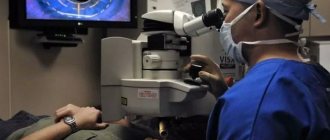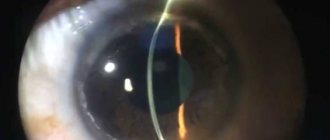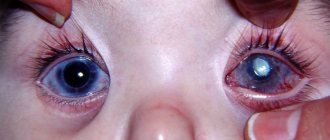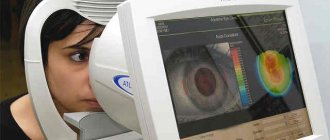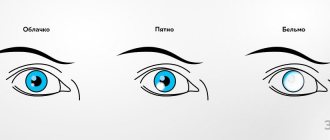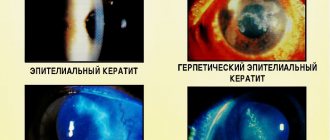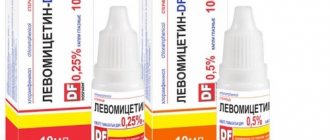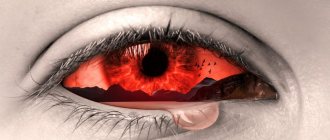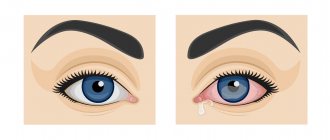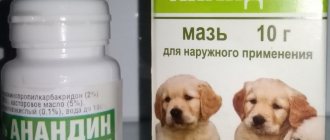The cornea of the eye is a thin membrane that is of great importance. It is this that protects the internal tissues from any negative impact. In addition, the cornea takes part in metabolic processes.
If a person injures this thin layer of the eye, serious problems may arise in the form of pain and other ophthalmological complications.
To restore its integrity as quickly as possible, it is necessary to use drops to restore the cornea of the eye. There are a huge number of different drugs that have the most positive effect on the mucous membranes.
When is it used?
Keratoprotectors have a lubricating and softening effect, and due to their inherent high viscosity, they increase the duration of contact of the solution with the cornea.
The corneal protector restores, stabilizes and acts as an absolute analogue of natural human tears. Scientists in the field of ophthalmology, in particular, Doctor of Medical Sciences E. V. Kovtun, noted that pronounced improvements in the condition of the organ of vision when using keratoprotectors occur after 3-5 days, and complete normalization of the condition of the eye mucosa - within 3 weeks. Ophthalmologists prescribe medications of this group in the following cases:
- If there is heavy strain on the eyes, for example, when working at a computer for a long time. In this case, medications that are similar to natural tears can also be used for preventive purposes.
- To reduce the time of eye adaptation to contact lenses.
- If necessary, carry out diagnostic ophthalmological measures.
- Injuries, wounds and other damage to the eyes to accelerate regeneration and restoration of the epithelium.
- Dystrophy, burns of the cornea and conjunctiva.
- Keratitis of various etiologies and severity.
Drops for the treatment of cataracts in cats and dogs
Unfortunately, this dangerous disease also occurs in animals.
If the slightest symptoms appear, you should go to an appointment with a qualified veterinarian as soon as possible. Quite often, the following eye drops are prescribed for the treatment of cataracts in cats and dogs:
- Taufon
is a metabolic agent, which is a 4% taurine solution. It is often prescribed to animals with degenerative processes of the cornea or retina, traumatic and horny cataracts for tissue restoration and cleansing. The course of treatment usually lasts 3 months, 2-3 drops are dripped two to four times a day; - Oftan katachrome
is an excellent stimulator of tissue regeneration that can quickly and effectively improve the energy metabolism of the lens. Prescribed for cataracts of various natures; - Catalin
is used as a prophylaxis for diabetic and progressive premature senile cataracts. Catalin normalizes metabolic processes in the lens and prevents the deposition of sorbitol.
Effective pharmaceuticals
Balarpan ophthalmic solution will help relieve inflammation and redness of the organs of vision.
The principle of action of keratoprotectors lies in the ability of their active components to eliminate pathological changes in the cornea. Conventionally, medications in this group are divided into medications that protect the cornea from negative external influences, and medications that improve the nutrition of the tissue structures of the anterior segment of the visual organ, and one of these is “Balarpan”. These eye drops effectively eliminate the consequences of injuries, inflammatory processes on the outer shell of the eye and burns. The medication quickly relieves discomfort and eliminates redness in the visual area. “Balarpan” owes its therapeutic effect to its composition, in particular to the active component, which are sulfated glycosaminoglycans.
The dosage is selected by the ophthalmologist individually for each patient, depending on the diagnosed pathology, and usually 1-2 drops are dripped into both eyes up to 5 times a day.
Keratoprotectors with a protective function
The following are the most effective drugs that belong to the group of keratoprotectors and provide reliable eye protection from the negative effects of environmental factors:
You can get rid of the feeling of dryness and burning in the eyes thanks to the drug Defislez.
- "Hyphenlease." The active ingredient is hypromellose, which quickly restores the damaged tear film of the cornea, softens it and protects it. The drops eliminate the redness of the mucous membrane, burning sensation, and the feeling of dryness that patients experience when there is a disruption in the production of fluid from the lacrimal canal.
- "Korneregel". Gel protector of the cornea, which stimulates regenerative processes and has an anti-inflammatory effect.
- "Visit." Forms a reliable protective film on the surface of the cornea and prevents it from drying out. Presented in the form of a solution for intraocular administration.
- "Dakrolux". A protector of the corneal epithelium, which provides high-quality lubrication and, due to the high viscosity solution, increases the time of contact of the drug with the cornea. Plus, it prolongs the effect of eye drops and protects the transparent outer shell of the eye from their irritating effects.
- "Lakrisin." Copies the optical characteristics of the tear film, improves the condition of the epithelium, reduces lesions and hyperemia. Marked improvement occurs after 1421 days.
Indications for use of eye drops
Unfortunately, it is impossible to completely get rid of cataracts with the help of drops, powders and other medications. The only solution is surgery, in which the clouded lens is replaced with a special intraocular lens.
But still, when contacting an ophthalmologist, special eye drops for cataracts are prescribed. They can significantly slow down the progression of the disease and delay the inevitable surgery to a more comfortable time for the patient. Sometimes the clouding can last even 15 years.
The doctor prescribes drops that contain substances that the lens lacks. In this way, metabolism improves, some tissues are regenerated and protein accumulations are resolved. Careful adherence to the specialist’s instructions and a full course of regular use give maximum results. This is followed by a second visit to the doctor, who analyzes the results of treatment and prescribes further actions.
Possible limitations and negative effects
Keratoprotectors are well tolerated and have a minimal number of contraindications. They should not be used by persons with absolute intolerance to any component of the composition, as well as by patients with diabetes mellitus and cancer. Occasionally, during the treatment of eye diseases through the instillation of eye drops belonging to the group of keratoprotectors, undesirable effects may develop, manifested in the form of burning, redness and allergic reactions. Typically, such symptoms are short-lived and go away on their own after stopping the medication and washing off the remaining medication with water.
Symptoms of cataracts
The main symptoms of cataracts are rapid deterioration of vision and the appearance of a kind of veil before the eyes. The pupil becomes whitish and the person begins to see as if looking through foggy glass. For this reason, in ancient Greece the disease was called “Kataraktes”, which means waterfall.
In addition, night and twilight vision noticeably deteriorates, objects become distorted and double, color rendition is disrupted, and difficulties arise when reading small print.
Since similar symptoms can occur with other eye diseases, only a qualified specialist can more accurately determine what exactly was the cause in this particular situation. During a detailed examination, the doctor sees the degree and location of lens clouding.
Stimulators of corneal regeneration
In case of diseases of the cornea with damage to the integrity of the surface, injuries and burns of the eye, it is necessary to accelerate its regeneration and improve metabolic processes.
To stimulate regenerative processes, substances isolated from various animal tissues (deproteinized dialysate from the blood of dairy calves, glycosaminoglycans) or analogues of various vitamins and nucleotides (dexpanthenol, Vitasik) are used.
It should be noted that the effectiveness of hydroxyethylaminoadenine hydrobromide from the point of view of evidence-based medicine is not substantiated.
Mechanism of action and pharmacological effects
Stimulation of regenerative processes is carried out by increasing the migration of epithelial cells from undamaged areas and/or increasing the mitotic activity of basal cells. Glycosaminoglycans not only stimulate regeneration, but also have an anti-inflammatory effect.
Pharmacokinetics
The absorption, distribution and elimination of these drugs cannot be studied by conventional pharmacokinetic methods (for example, radiolabeling, etc.), since they contain low molecular weight components that are normally present in the body of all mammals.
Place in therapy
Corneal regeneration stimulators are used to treat the following diseases:
- mechanical damage to the cornea and conjunctiva (erosion, trauma);
- burns of the cornea and conjunctiva: chemical (caused by exposure to acids and alkalis), thermal, radiation (caused by exposure to ultraviolet, x-rays and other types of short-wave radiation);
- keratitis of bacterial, viral, fungal etiology (in the stage of epithalization in combination with antibiotics, antiviral, antifungal drugs);
- corneal dystrophy of various origins (including neuroparalytic, lagophthalmic keratitis, dry keratoconjunctivitis, bullous keratopathy).
- used to accelerate the healing process of postoperative scars of the cornea and conjunctiva;
- to reduce the adaptation time to hard and soft contact lenses and improve their tolerability;
- after diagnostic procedures using contact lenses (goniscopy, retinoscopy and other studies).
Tolerability and side effects
- Local reactions - short-term mild burning, allergic reactions.
Contraindications
- Hypersensitivity.
- Diabetes mellitus (for glycosaminoglycans).
- Oncological diseases (for glycosaminoglycans).
Combinations with antinucleoside derivatives with a virostatic effect are undesirable - when combined with deproteinized dialysate from the blood of dairy calves, the antiviral effect is reduced.
Adgelon
Dosage form: eye drops
Pharmacological action: Stimulator of reparative processes in the cornea of the eye. By promoting the activation of fibroblasts, it prevents the development of the inflammatory process, the growth of scar tissue, and the ingrowth of blood vessels into the cornea.
The action is due to its ability to enhance the adhesion of cells of mesenchymal origin, as well as to inhibit the processes of lipid peroxidation - a universal mechanism of damage to cell membrane structures under various pathological conditions, exposure to extreme factors, as well as during aging. In the case of burn damage to the eyes, the therapeutic effect is manifested by the 14th day by a significant proliferation of fibroblasts infiltrating the injured corneal tissue, and the vector orientation of the proliferating cells determines the lamellar structure of the cornea, imitating the original morphological structure of the tissue.
Indications:
- Keratopathy,
- corneal erosions,
- keratitis (including herpetic and adenoviral),
- eye burns,
- penetrating wounds of the cornea.
Contraindications: Hypersensitivity.
Side effects: The drug is non-toxic, does not have an adverse effect on the tissues of the eye and the body as a whole, and does not cause an allergic reaction with long-term use.
Method of administration and dosage: Instill 1-2 drops into the conjunctival sac 3-6 times a day for at least 14 days. In especially severe cases, instill them every 2 hours for the first 3-7 days.
Special instructions: After opening the bottle, store the drug at a temperature of +4-10 degrees C for no more than 2 days.
Interaction: Can be used in conjunction with other ophthalmic drugs (including antimicrobial drugs) subject to a time interval of 15-30 minutes between instillations.
Balarpan
Dosage form: eye drops
Indications:
- Ulcerative keratitis,
- keratopathy of various etiologies and diseases associated with metabolic disorders of corneal tissue;
- keratotomy, keratoplasty, keratomileusis, cataract, corneal burns,
- epithelial endothelial dystrophy of the cornea,
- keratoconjunctivitis.
Contraindications: Hypersensitivity.
Side effects: Conjunctival hyperemia.
Method of administration and dosage: Conjunctivally, 1-2 drops are instilled into the affected eye 6-8 times in the first 2 days, then 2-3 times a day. The duration of treatment is from 10 days to 1 month (depending on the severity and duration of the disease and the period of postoperative intervention).
Interaction: Compatible with all antibiotics used in ophthalmic surgery.
Description of trade name: Balarpan
Source: https://eyesfor.me/glossary-of-terms/s/stimulants-corneal-regeneration.html
